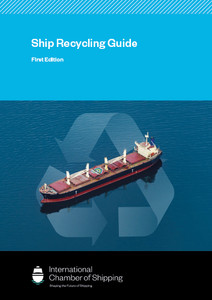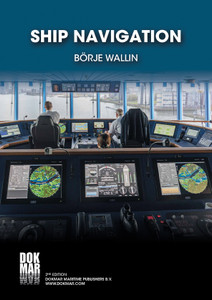
The ICS Diversity and Inclusion Toolkit for Shipping has been developed to create awareness and inspire change in the strategies, policies and practices that will enable the maritime industry to meet the needs of the diverse seafarer community. It provides descriptions and definitions; provides ways to assess the current needs of diverse communities and identify gaps in services, policies and practice; and makes suggestions on how to fill these gaps.
The toolkit will help companies:
- Enhance existing diversity assessments and increase awareness of diversity issues and needs;
- Embed the principle of diversity throughout their service and influence strategic planning at all levels;
- Develop good practice;
- Meet legislative requirements;
- Assess current performance, to identify any barriers preventing progress and to provide advice and guidance on how to overcome these; and
- Enhance monitoring and data collection mechanisms to highlight the needs of different communities.
Foreword
Embracing diversity and inclusion (D&I) policies can be a real boost to business efficiency and improved performance. The same applies to shipping companies for whom a positive approach to D&I issues should be a matter of enlightened self interest, as well as being the right thing to do.
Effective implementation of D&I policies can enable shipping companies to recruit from a larger pool of people, retain skilled staff for longer and motivate them more effectively, as well as help to improve relationships with customers and the wider world. A diverse workforce can be a company's strongest asset.
This toolkit has been developed by the International Chamber of Shipping (ICS) to create greater awareness of D&I and inspire change in strategies, policies and practices to enable the maritime industry to address the needs of the diverse global community it employs, both at sea and ashore. The toolkit provides definitions and explanations of what diversity and inclusion are and provides ways to assess the current needs of diverse communities working within shipping to identify potential gaps in services, policies and practice; and provides best practice on how to fill these gaps.
The toolkit can be used on shore and on board ships across a range of departments. It breaks down D&I concepts and delivers them holistically, function by function, to ensure that everyone in the company's team can benefit from its resources, learn something new and take practical steps in their role.
This toolkit helps shipping companies and maritime organisations:
• Enhance existing diversity assessments
• Increase awareness of D&I issues and needs
• Embed principles of diversity in their workforce
• Influence strategic planning at all levels
• Develop good practice
• Meet legislative requirements
• Assess current performance
• Identify barriers to progress
• Develop strategies to overcome any barriers
• Enhance monitoring and data collection on different communities’ needs.
D&I policies will enable shipping companies to:
• Access a wider talent pool
• Gain insight into the needs and motivations of their wider client and customer base
• Reflect societies and demographics more accurately
• Have a broader range of talents and experiences
• Become more creative, sustainable and profitable.
This toolkit highlights areas where changes can be made to assist shipping companies to demonstrate:
• Active promotion and encouragement of D&I
• D&I measures in business plans
• Continual review of D&I measures
• D&I as a high priority for the business
• Staffing agencies notified of D&I policies
• Events to promote D&I and corporate social policies
• Celebration of national and religious festivals ashore and at sea
• Introduction of flexible working patterns
• Collaboration with organisations promoting diversity
• D&I targets published
• Provision of employment for disabled seafarers at sea or ashore
• Provision of ergonomically suitable personal protective equipment (PPE) for all seafarers
• Trade union or employee group involvement in agreeing a joint strategy.
There are four main steps to take to achieve a diverse and inclusive workforce – look, listen, act and repeat.
Foreword
Chapter 1
The value of diversity and inclusion
1.1 Diversity
1.2 Inclusion
1.3 Creating an inclusive and diverse workforce
1.4 The business rationale
1.5 Benefits
1.6 The UN Sustainable Development Goals
1.7 The IMO and the SDGs
1.8 Corporate social policies
Chapter 2
Areas of diversity – definitions and explanations
2.1 Sex and gender
2.1.1 Women in shipping
2.1.2 Gender identity
2.1.3 Gender expression
2.1.4 Gender definitions
2.1.5 Gender discrimination, bias and corporate cultures
2.2 Race and ethnicity
2.3 Religion or belief
2.4 Age
2.4.1 Age discrimination
2.4.2 The generations
2.5 Social background
2.6 Disability
2.7 Marriage and civil partnership
2.8 Pregnancy, maternity, paternity and adoption
2.9 Menopause
2.10 Andropause
Chapter 3
Diversity and inclusion policies
3.1 Equal pay
3.2 Training and development
3.2.1 Coaching
3.2.2 Training tools
3.2.3 Interview training
3.2.4 Workshops and forums
3.2.5 Respect and engagement training
3.2.6 Communicating diversity and inclusion policies
3.3 Company inclusive culture
3.3.1 Workplace environment
3.3.2 Employee handbooks and intranet systems
3.3.3 One to one meetings
3.3.4 Four steps to creating a D&I culture
3.3.5 D&I calendar sample
3.3.6 Developing a corporate strategy
3.3.7 Example of a strategy template
3.3.8 Opportunities to intervene and agents of change
3.3.9 Stereotypes and prejudice
3.3.10 Discrimination, harassment and victimisation
3.3.11 Managers and leaders
3.3.12 Leadership training
3.3.13 Skip level meetings
3.3.14 Policies
3.4 Recruitment, selection and retention
3.4.1 Unconscious bias in recruitment
3.4.2 Job descriptions and recruitment advertising
3.4.3 Language
3.4.4 Gender-neutral terms
3.4.5 Advertising
3.4.6 Interview panels
3.4.7 Selection
3.4.8 Retention
3.4.9 Agility
3.4.10 Sponsorship
3.4.11 Mentoring, buddies and coaching
3.4.12 Attracting a diversity of employees
3.4.13 Talent identification and development
3.5 Wellbeing and safety
3.5.1 Physical health at sea
3.5.2 Communication
3.5.3 Flexible working for seafarers
3.5.4 Flexible hiring
3.5.5 Engagement
3.5.6 Mental health
3.5.7 The impact on business of COVID-19
3.6 Disability and medical fitness
3.7 Clothing
3.7.1 Personal protective equipment
3.7.2 Religious dress
3.8 Food and diet
3.9 Religion or belief
3.9.1 Faith and burial practices
3.10 Other tools
3.10.1 ICS tools
3.10.2 Helplines for seafarers
3.11 Career progression for seafarers
3.11.1 Transitioning to shore
3.11.2 Career pathways
3.11.3 Developing opportunities for all staff
3.12 ICS Maritime Diversity and Inclusion Charter
Chapter 4
Measuring, monitoring and driving change
4.1 Future proofing
4.1.1 Innovation
4.1.2 Strategy – how to
4.2 Monitoring
4.2.1 Monitoring methods
4.2.2 Using monitoring results
4.3 Targets
4.4 Tools
4.4.1 Surveys
4.4.2 Diversity scorecards
4.5 Acquisitions
ICS
The International Chamber of Shipping (ICS) is the principal international trade association for the shipping industry, representing shipowners and operators in all sectors and trades. ICS membership comprises national shipowners' associations in Asia, Europe and the Americas whose member shipping companies operate over 80% of the world's merchant tonnage.
Established in 1921, ICS is concerned with all technical, legal, employment affairs and policy issues that may affect international shipping.
ICS represents shipowners with the various intergovernmental regulatory bodies that impact on shipping, including the International Maritime Organization.
ICS also develops best practices and guidance, including a wide range of publications and free resources that are used by ship operators globally.
- Number of Pages:
- 116
- Published Date:
- January 2023
- Book Height:
- 0 mm
- Book Width:
- 0 mm
- Author:
ICS
- Preview:
- Yes
- Publication Date:
- January 2023






